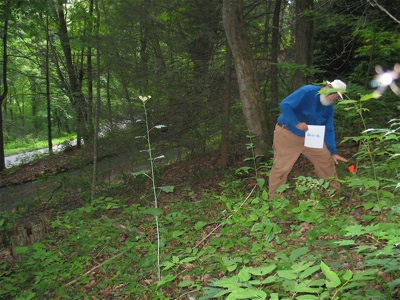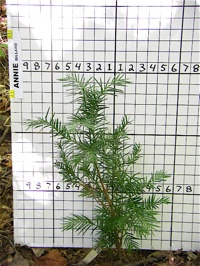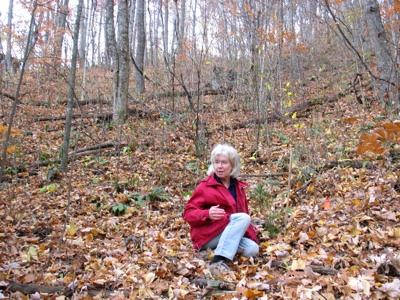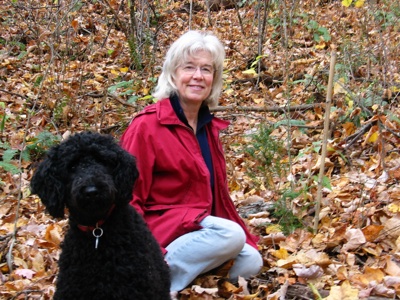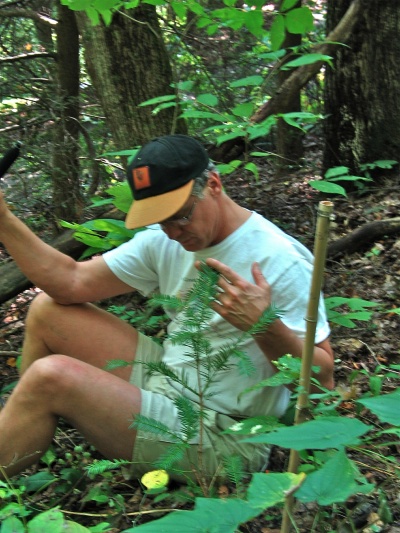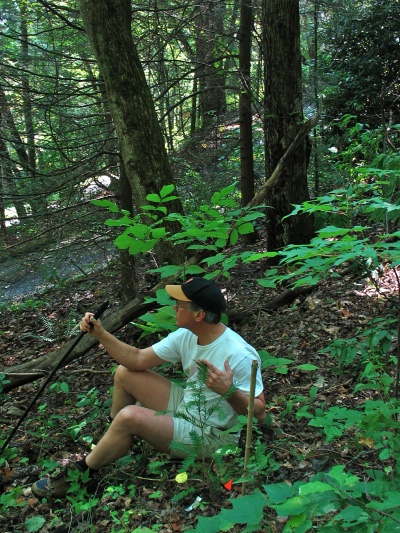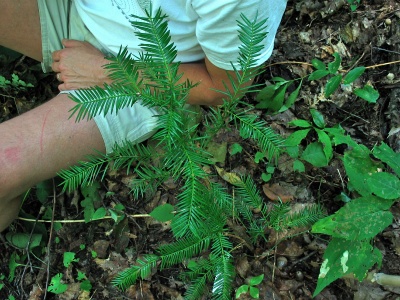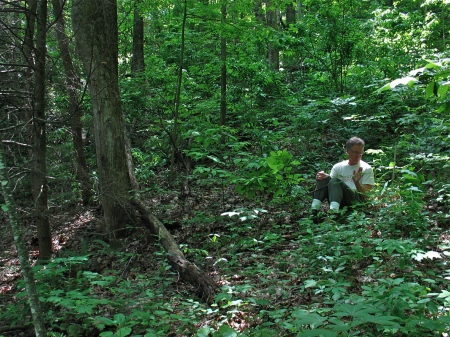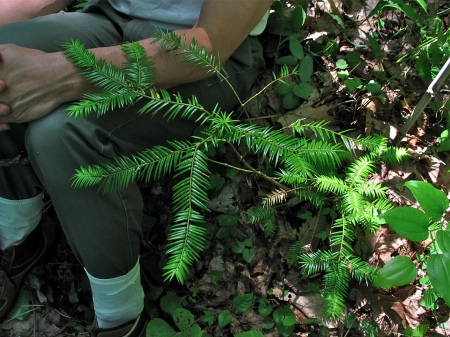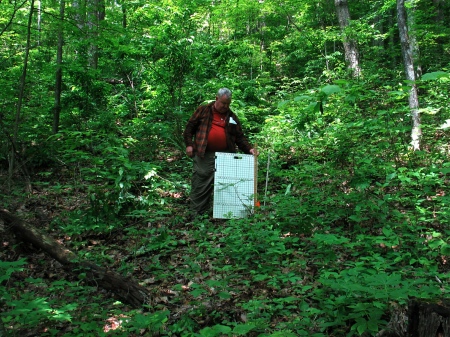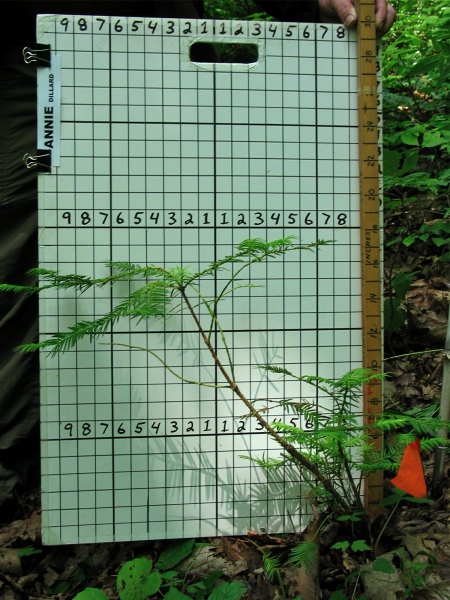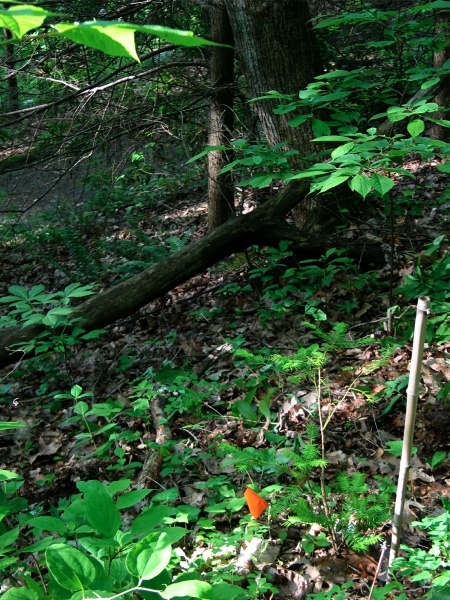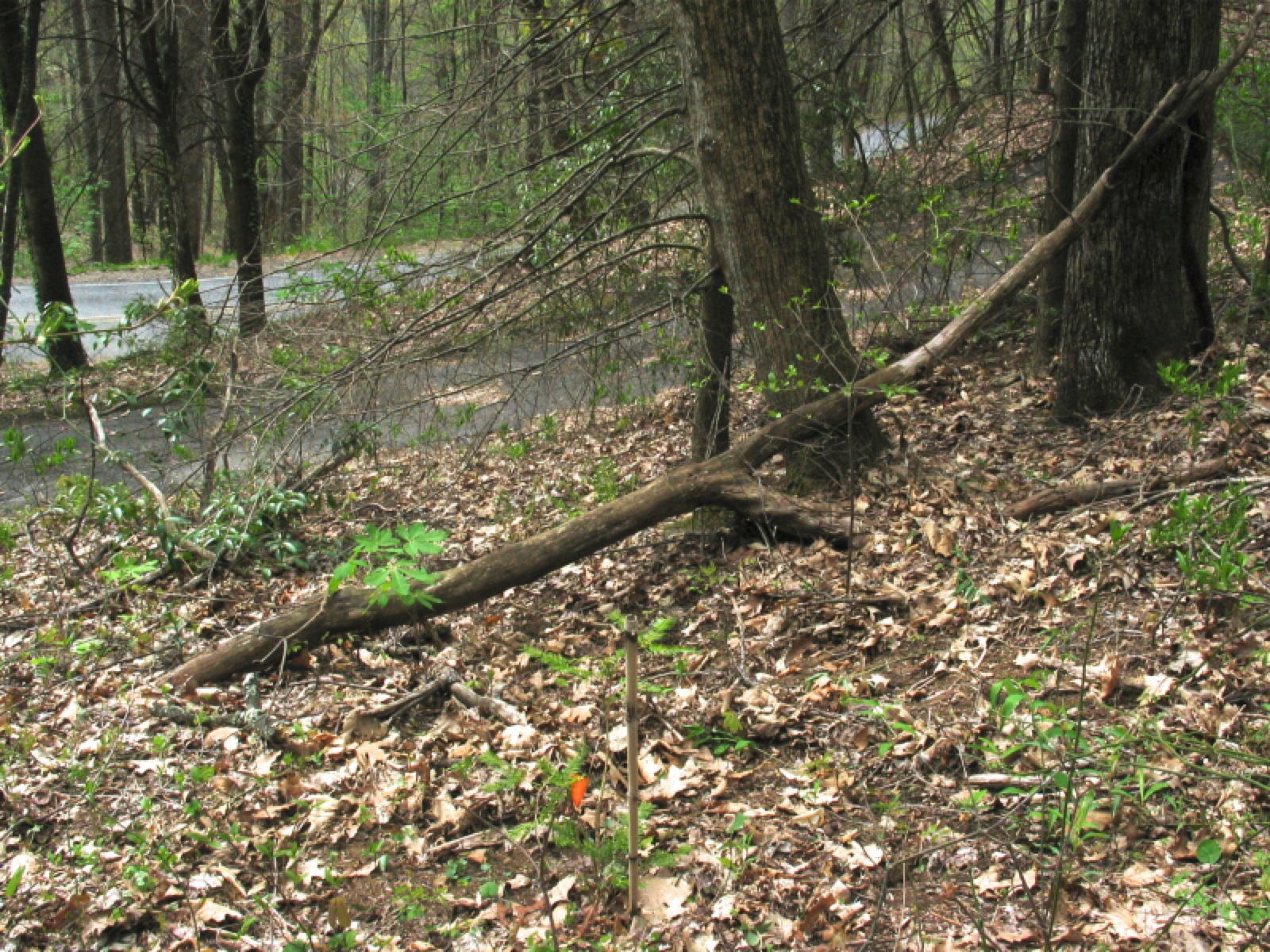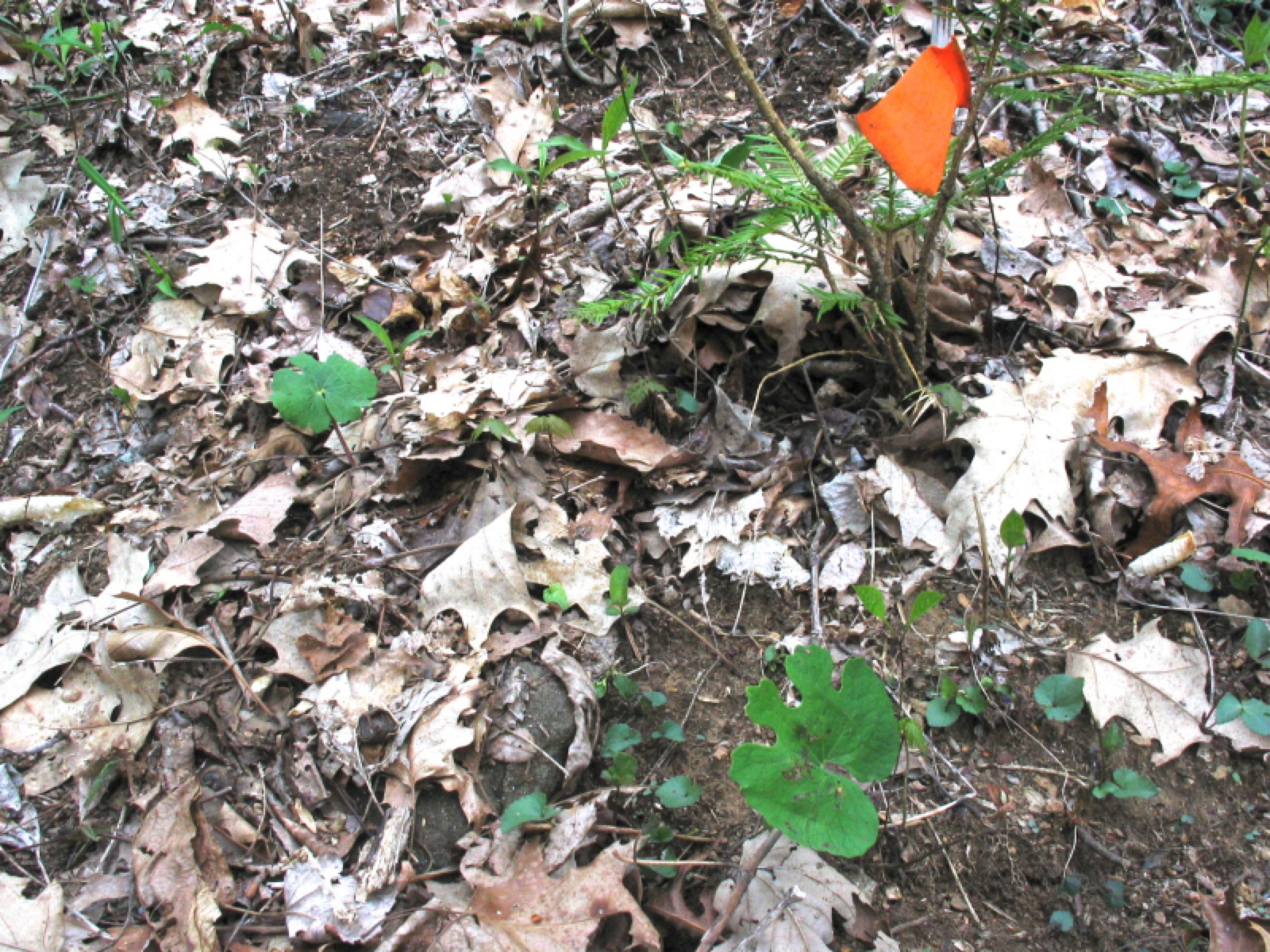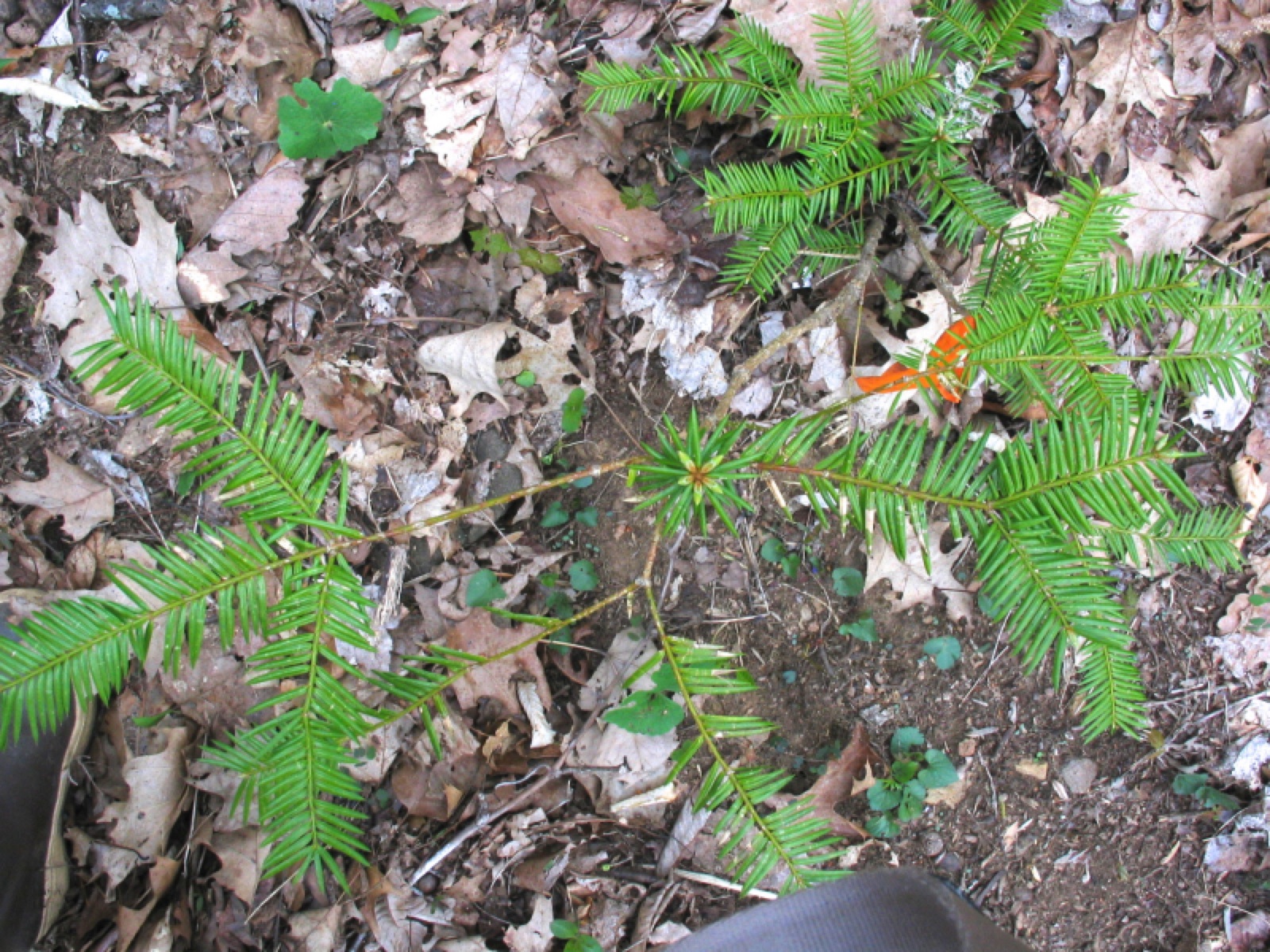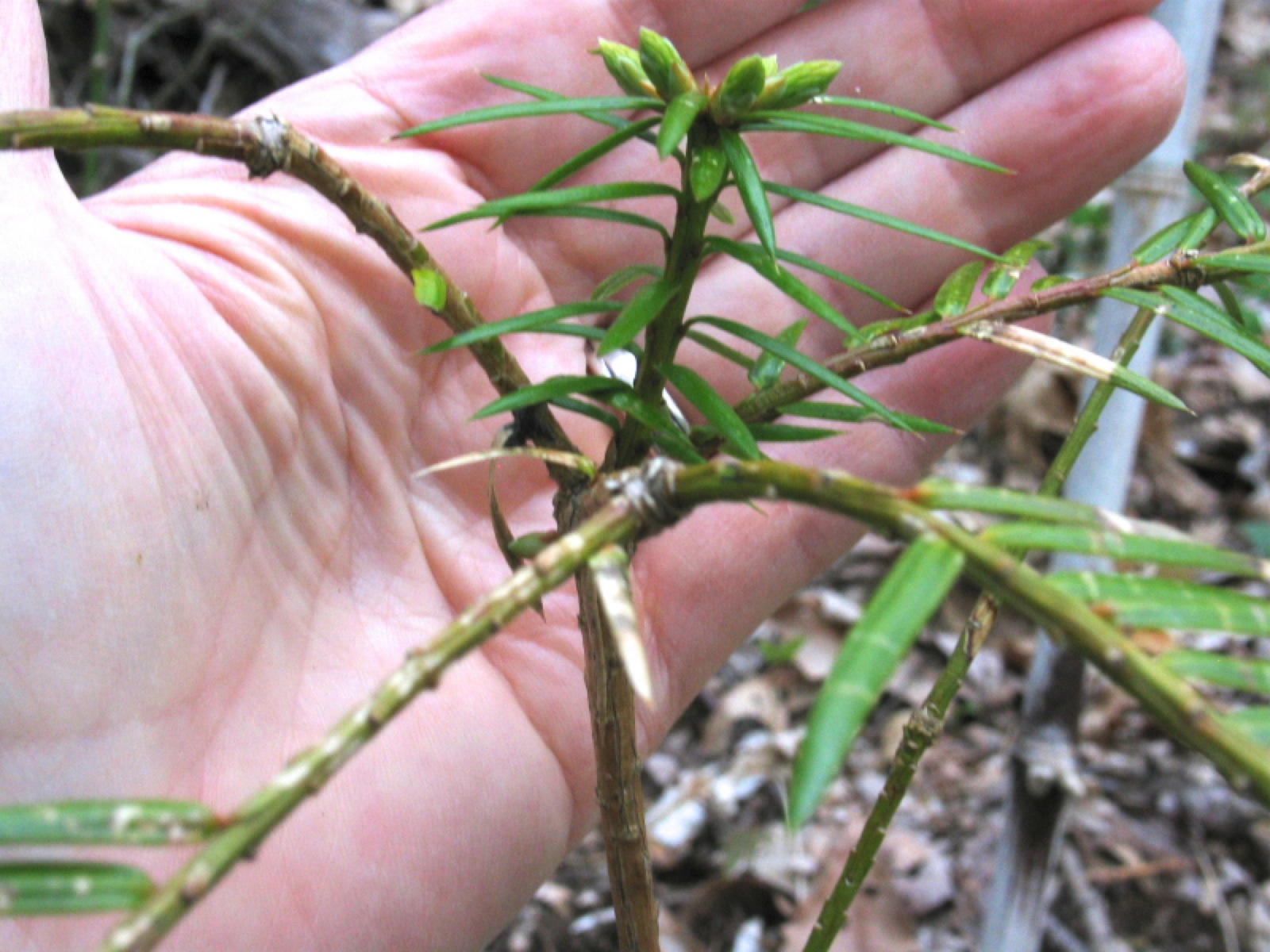
Evans Property Waynesville, North Carolina (planted July 2008)
LEFT (May 18, 2012): View westward (upslope) to Annie from the main path. Annie is the lowest-elevation specimen on the entire property. The creek is about 12 feet behind the photographer. A dead hemlock is the 8"-diameter trunk in the left-most (south) part of the photo. There are no tall lower-canopy shrubs nearby, but there is a complete high-canopy deciduous cover, so this area may be a newly "released" zone following the very recent death of the hemlocks.
RIGHT (May 18, 2012): This Torreya has both apical and lateral branch-tip new growth from the top of its main stem. It also has new growth on the basal coppice stem that will take over if the main stem fails. Notice that all the top radiating lateral branches have a singlet of new growth, except one has a doublet. You can, however, see the the upper left-most branch had a triplet of new growth last year, on which singlets are growing this year. Triplets are the most exuberant growth form at the tips of lateral branches. On a scale in which "Celia" specimen is rated by Lee Barnes as a 10, this specimen is a 7.
ABOVE (May 18, 2012): Excellent moist-soil plant indicators include Solomon Seal, trillium, and lots of deciduous fern.
LEFT (May 18, 2012): The neighbor's access road is visible in background
ABOVE LEFT (April 24, 2013): "Annie" is marked by the orange flag and is just to the left of the bamboo stake in foreground. Neighbor's dark gray drive and then light gray road visible behind.
ABOVE RIGHT (April 24, 2013): Two bloodroots (single large leaf) visible to left of Torreya.
ABOVE LEFT (April 24, 2013): Top-down view, with apical of main stem at center, and a bushy short ancillary basal stem splaying outward (at top of photo).
ABOVE RIGHT (April 24, 2013): Close-up of vigorous apical buds, but notice how gangly and barren the radial layer below is, which probably bears leaves grown back in 2009 or 2010. It will be interesting to monitor whether this new apical radial budding becomes lush, or whether the plant "decides" to abandon this weak main stem and simply try to grow one or both of the ancillary basal stems.
|
